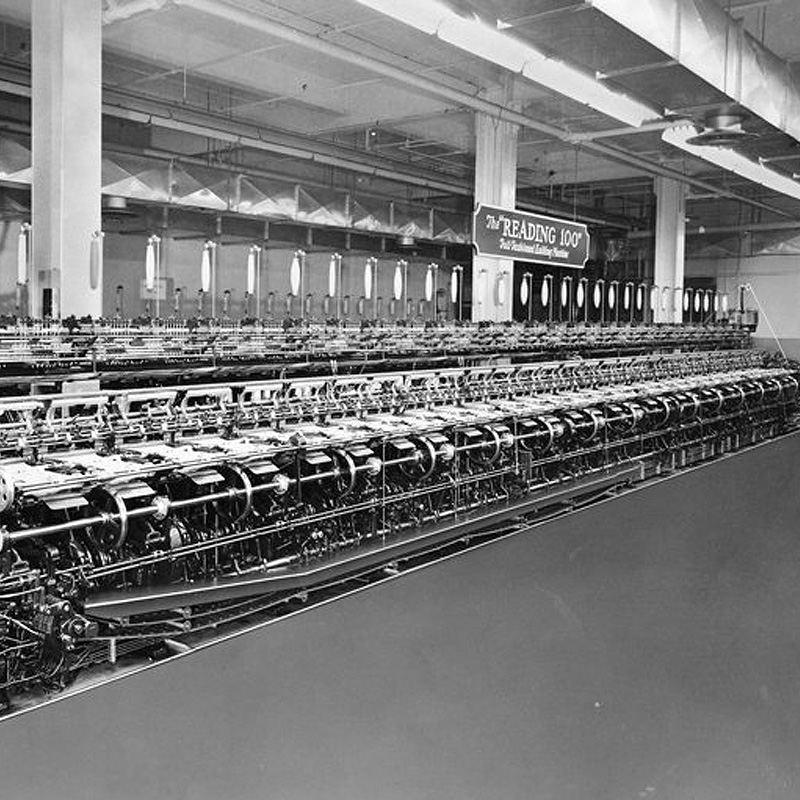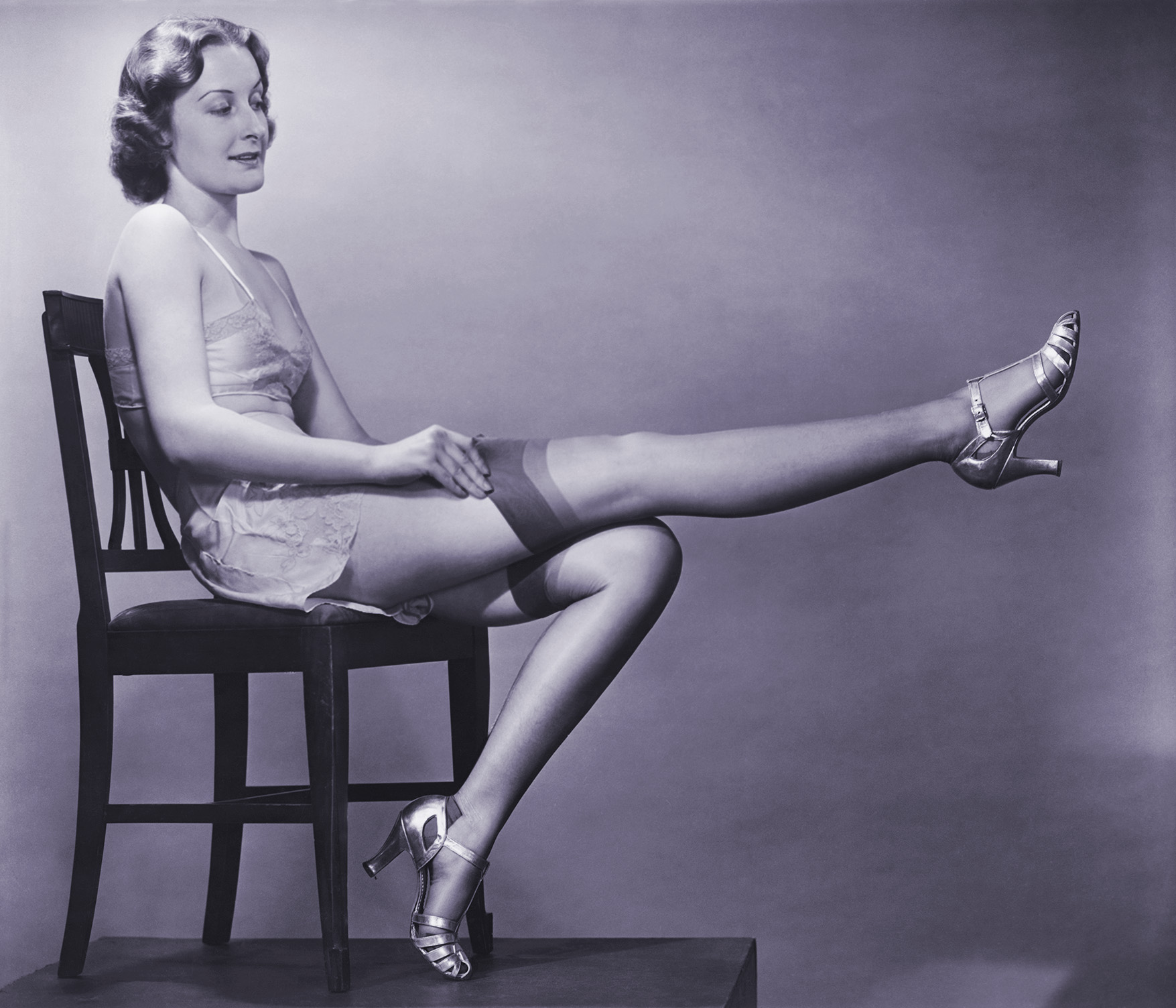How it all began…

Reading Knitting Machine
Nylon stockings made their grand debut on October 24, 1939 at the World’s Fair in New York. Prior to that date, women’s stockings were primarily made from silk and were very delicate, prone to snags and runs and not easily cleaned. These problems were ultimately solved due to the efforts of chemist Wallace Hume Carothers, who worked for the DuPont company, headquartered in Wilmington, Delaware, USA. His 10 year project finally came to fruition in 1935 when he was the first to create the synthetic material known as Nylon. Initially, DuPont wasn’t sure what they were going to use this new material for, but found a brilliant use case in updating women’s hosiery. By the time the stockings were released for sale to the public on May 15, 1940 demand was so high that women flocked to stores by the thousands. Four million pairs sold out in four days. Needless to say, the stockings revolution had begun.
Selling for about $1.15 per pair in the United States, nylon stockings were all the rage with women everywhere and had become an essential part of a woman’s attire. At that time they were “fully fashioned”, created in a wide variety of sizes to fit the leg exactly and knitted together down the back showing the still ever popular seam. The manufacturing process was labor intensive, highly complex and required the use of a Reading Knitting Machine made by Reading Machinery Company in Reading, Pennsylvania. This machine was 45 feet long, and it could make 30 stockings concurrently. But that all came to a halt in 1942 when production was abruptly halted by DuPont, who had begun to sharply pivot nylon for exclusive use in parachutes, ropes, and airplane materials to support the war effort.
After production stopped, it did not take long for supply to dry up and nylon stockings were, quickly, very hard to get. During that time, women had become quite adept at drawing a line down the backs of their legs to give the appearance of stockings by mimicking this seam line.
In August 1945, eight days after Japan’s surrender, Du Pont announced that it would resume producing stockings and newspaper headlines cheered “Peace, It’s Here! Nylons on Sale!”
The end of World War II ushered in the next chapter of nylon stocking drama. In 1945, The “Nylon Riots” ensued around the U.S. when hundreds, and sometimes even thousands of women, queued up outside department stores to try to get a pair. Stores were flooded with mobs of women, clamoring to get their hands on a pair of nylons. In November, 30,000 women reportedly lined up in New York; 40,000 women in Pittsburgh queued up for a mere 13,000 pairs. A headline in Augusta, Georgia, read “Women Risk Life and Limb in Bitter Battle for Nylons” and went on to detail how crowds clamored into the store, knocking down shelves and displays along the way. News of the riots was all over the papers and magazines. It was declared that no other commodity had ever received as much free advertising in the history of the newspaper industry. The press reported outrageous instances of hair-pulling, hysterical women fighting tooth and nail for a pair of the prized stockings. The shortage persisted into 1946 but by March, Du Pont was finally able to ramp up production and began churning out 30 million pairs of stockings a month. Widespread availability of the stockings ended the period of the ‘Nylon Riots’.
Follow Our Scintillating Channels ;)

